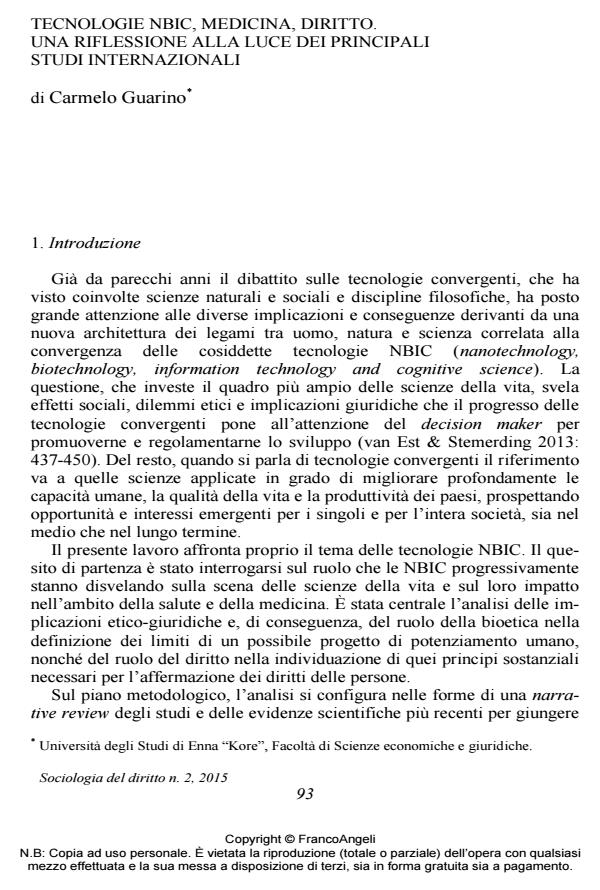NBIC technologies, medicine and law. Considerations in the light of leading international studies
Journal title SOCIOLOGIA DEL DIRITTO
Author/s Carmelo Guarino
Publishing Year 2015 Issue 2015/2
Language Italian Pages 22 P. 93-114 File size 266 KB
DOI 10.3280/SD2015-002004
DOI is like a bar code for intellectual property: to have more infomation
click here
Below, you can see the article first page
If you want to buy this article in PDF format, you can do it, following the instructions to buy download credits

FrancoAngeli is member of Publishers International Linking Association, Inc (PILA), a not-for-profit association which run the CrossRef service enabling links to and from online scholarly content.
The improvement in human lifespan and potential for activity that has been brought about by the ceaseless development of NBIC technologies is certainly not without precedent as a topic for bioethical and legal considerations. These days, however, there is a need to achieve synergy between sciences, philosophies, law and policy-making, so as to generate agreed paradigms and models, as a step towards redefining the limits of what is ethically permissible. Indeed, such limits are notably hard to identify with clarity, as scientific and technological progress is so much faster now than ever before in history. This article uses the method of narrative review to discuss the crucial role now played by emerging technologies in the field of life sciences, in the light of evidence and of the latest studies about the part played by bioethics and law. These are the factors that define the frame of the argument and of the decision-making relative to the context, involving stakeholders and institutions and thus contributing to defining the limits of the need and the extent of what is feasible, recognising that the people are the ultimate aim of every human action
Keywords: Emerging technologies - Medicine - Bioethics - Law
Carmelo Guarino, Tecnologie NBIC, medicina, diritto. Una riflessione alla luce dei principali studi internazionali in "SOCIOLOGIA DEL DIRITTO " 2/2015, pp 93-114, DOI: 10.3280/SD2015-002004